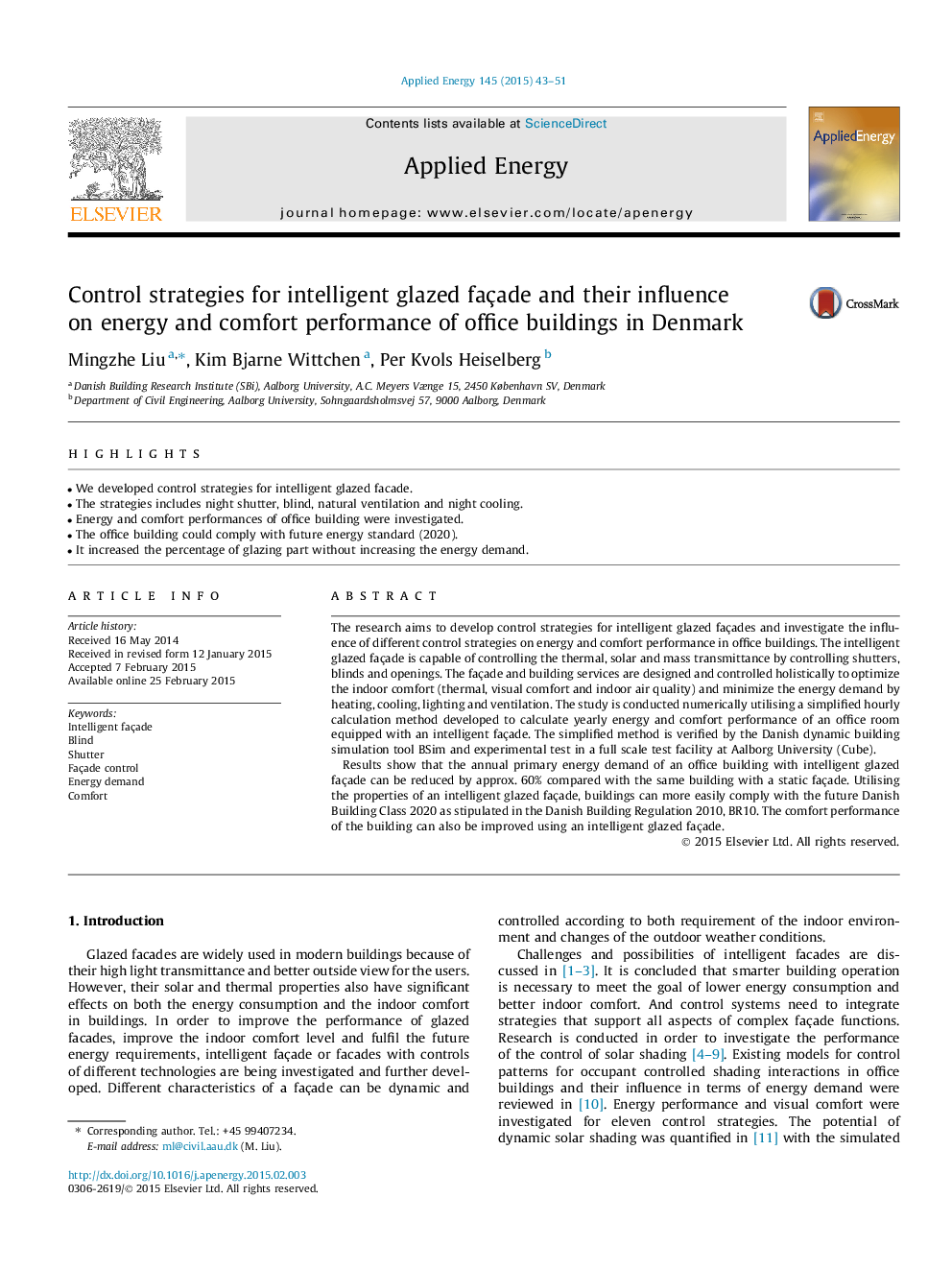| Article ID | Journal | Published Year | Pages | File Type |
|---|---|---|---|---|
| 242536 | Applied Energy | 2015 | 9 Pages |
•We developed control strategies for intelligent glazed facade.•The strategies includes night shutter, blind, natural ventilation and night cooling.•Energy and comfort performances of office building were investigated.•The office building could comply with future energy standard (2020).•It increased the percentage of glazing part without increasing the energy demand.
The research aims to develop control strategies for intelligent glazed façades and investigate the influence of different control strategies on energy and comfort performance in office buildings. The intelligent glazed façade is capable of controlling the thermal, solar and mass transmittance by controlling shutters, blinds and openings. The façade and building services are designed and controlled holistically to optimize the indoor comfort (thermal, visual comfort and indoor air quality) and minimize the energy demand by heating, cooling, lighting and ventilation. The study is conducted numerically utilising a simplified hourly calculation method developed to calculate yearly energy and comfort performance of an office room equipped with an intelligent façade. The simplified method is verified by the Danish dynamic building simulation tool BSim and experimental test in a full scale test facility at Aalborg University (Cube).Results show that the annual primary energy demand of an office building with intelligent glazed façade can be reduced by approx. 60% compared with the same building with a static façade. Utilising the properties of an intelligent glazed façade, buildings can more easily comply with the future Danish Building Class 2020 as stipulated in the Danish Building Regulation 2010, BR10. The comfort performance of the building can also be improved using an intelligent glazed façade.
